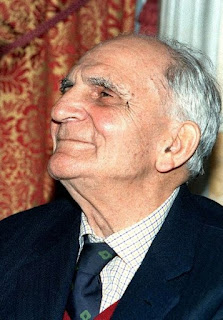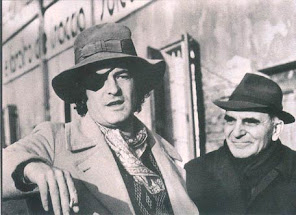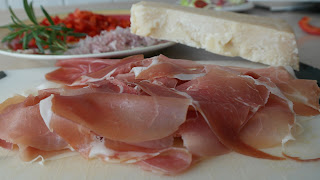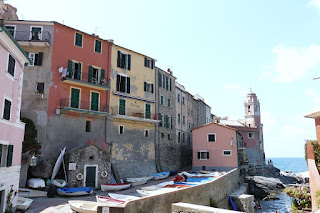Johnny Dundee – world champion boxer
Sicilian changed his name to sound non-Italian
The boxer Johnny Dundee, who was a child when his family emigrated to the United States, was born in Sciacca, a town on the southwest coast of Sicily, on this day in 1893. Dundee, regarded by many boxing historians as the first of the great Italian-American fighters, had more than 330 fights in a 22-year career in the ring. At the peak of his career, in the 1920s, Dundee won both the world featherweight and world junior-lightweight titles. Dundee’s real name is thought to have been Giuseppe Curreri, although some boxing records have his second name as Carrora. The large numbers of Italian immigrants arriving in New York at around the turn of the 20th century, few of whom spoke any English, sometimes overwhelmed officers at the city’s processing station on Ellis Island and mistakes in recording details were common. There are variations, too, in accounts of how old Giuseppe was when his family uprooted him from his childhood home, with some saying he was just five but others suggesting he was nine. What seems not in dispute is that his family joined other Italian families in the Lower East Side of Manhattan. Read more…
_____________________________________________________________
Giuseppe Volpi - businessman and politician
Founder of the Venice film festival
Businessman and politician Count Giuseppe Volpi of Misurata was born on this day in 1877 in Venice. Volpi was responsible for bringing electricity to Venice and the north east of Italy in 1903 and had an influence on the development of Porto Marghera, the industrial complex across the lagoon from Venice. But, in 1932, as president of the Venice Biennale, Volpi arranged the first Venice Film Festival. It took place between 6 and 21 August on the terrace of the Hotel Excelsior at the Venice Lido. The first film to be shown at the festival was Rouben Mamoulian’s Dr Jekyll and Mr Hyde. The festival was considered a success and was held again in 1934 from 1 to 20 August, when it involved a competition for the first time. In 1935 the Film Festival became a yearly event in Venice and the Coppa Volpi (Volpi Cup), an award for actors, was introduced for the first time. Count Volpi received a personal letter from Walt Disney in 1939 thanking him, as president of the Biennale, for the prize awarded to Snow White and the Seven Dwarfs at the film festival. This letter is now in the historical archives of the Biennale. Read more…
______________________________________________________________
Luigi Beccali - Olympic athlete
Milanese runner brought home Italy's first track gold
Luigi Beccali, the first Italian to win an Olympic gold medal in track and field events, was born on this day in 1907 in Milan. Although Italy had won gold medals in fencing and gymnastics in previous Games, Beccali's victory in the 1,500 metres at the 1932 Olympics in Los Angeles was the first time an Italian had won gold in a running event. His victory came out of the blue since the field included several runners with top credentials, including New Zealand’s Jack Lovelock and America's Glenn Cunningham. Beccali had a reputation as a determined competitor but his results were relatively modest next to those of the favourites. However, in May of 1932 he had posted a mile time of four minutes 11.5 seconds in Milan which was only four tenths of a second slower than Cunningham's time in winning the 1932 National Collegiate Athletics Association championships. The three heats at Los Angeles were won by Lovelock, Beccali, and Cunningham, who posted the best time of 3:55.8 in winning the first heat. In the final, Beccali timed his run superbly, working his way through the field to take the lead from Canada's Phil Edwards, who had started to pull away over the last lap, with 100m remaining. Read more…
___________________________________________________________
Pino Rauti – politician and journalist
Writer chronicled the story of fascism in Italy
Pino Rauti, leader of the neo-fascist Social Idea Movement, was born Giuseppe Umberto Rauti on this day in 1926 in Cardinale in Calabria. Rauti was to become a leading figure on the far right of Italian politics from 1948 until his death in 2012. As a young man he had volunteered for the Guardia Nazionale Repubblicana of Benito Mussolini’s Italian Social Republic and he then went on to join the Spanish Foreign Legion. After his return to Italy, Rauti joined the post-fascist Italian Social Movement (MSI). He became associated with Julius Evola, a leading fascist philosopher, and became editor of his journal, Imperium. Rauti joined the staff of the Rome-based daily Il Tempo in 1953 and later became the Italian correspondent for the Aginter Press, a fake press agency set up in Portugal in 1966 to combat communism. In 1954 he established his own group within MSI, the Ordine Nuovo, but he became disillusioned with MSI and his group separated from the party two years later. Rauti’s name was linked with a number of terror attacks, including the Piazza Fontana bombing in Milan, which caused 17 deaths. Read more…
_____________________________________________________________
Pope Clement VII
Calamitous papacy of a vacillating Medici
Giulio di Giuliano de’ Medici, remembered as the unfortunate Pope who was imprisoned in Castel Sant’Angelo in Rome, was elected on this day in 1523 as Pope Clement VII. Clement VII also went down in history for refusing to allow the King of England, Henry VIII, to annul his marriage to Catherine of Aragon, causing England to break away from the Catholic Church forever. One month before Giulio de Medici’s birth, his father was murdered in Florence Cathedral in what is referred to as the Pazzi conspiracy. His mother is believed to have been Fioretta Gorini, the daughter of a university professor, and Giulio was born illegitimately in May 1478 in Florence. Giulio spent the first seven years of his life living with his godfather, the architect Antonio da Sangallo, the Elder. Then Lorenzo the Magnificent took over, raising him as one of his own sons, alongside Giovanni, the future Pope Leo X, Piero and Giuliano. Young Giulio received a humanist education at Palazzo Medici and became an accomplished musician. He studied canon law at the University of Pisa and accompanied his cousin, Giovanni, to the conclave of 1492 when Rodrigo Borgia was elected Pope Alexander VI. Read more…




















